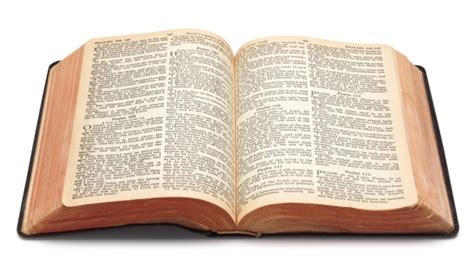Partial Preterisim in Revelation through the Amillennial view.
This is my edited version of an article I read. I wrote this for clarity because truth matters, and for Christians to see another view of Revelation and to take away fear of the future.
The best way to understand Revelation is by asking what did it mean to the people that it was written too during the times that they were living in?
Chapter 1: Jesus appears to John, to give a message to seven churches of what must soon take place because the time was near. Revelation is the revelation of Jesus Christ as in who Jesus is and what He did. Jesus is God and He ushered in the New Covenant.
The “coming of the Son of Man” is not referring to the Second Coming, but to the “judgment coming” of 70 AD, which John says was targeted against “the tribes of the Land” (the tribes of Israel). In the bible, the phrase “coming in the clouds” is an apocalyptic symbol for coming in judgement.
Chapter 2-3: Jesus has John write seven letters to seven literal churches in Asia (near the island of Patmos where John was). The theme of each letter also alludes to a section of the Revelation itself. Although the message was directly to seven literal churches that were in the world when John penned Revelation, they were also instructions and warning to the church throughout history. These letters are vital to keep a church healthy.
Chapter 4: John is taken to heaven. He sees the throne of God, the 4 “living creatures” and the 24 elders (who symbolically represent the whole Church). Some believe that this is symbolic of the rapture but the text states that only John is taken up to heaven for the purpose of receiving and conveying a message for the church.
Chapter 5: John sees God the Father holding the scroll of the New Covenant. It is sealed with seven seals, which was recognized in first-century Judea as being the “will” of a deceased person. This scroll of the New Covenant is the will of Jesus Christ himself, who ascends to heaven and takes the scroll to open it because only Jesus is worthy.
Chapter 6: John sees the first six seals of the scroll broken open. A scroll broken open was right before the events in the scroll were to take place. Daniel was told to seal up his scroll because it was for the time of the end (Daniel 12:4) John was told not to seal up the words of his scroll because the time was near (Revelation 22:10).
Each seal draws a parallel to the prophecies of Christ in the Olivet Discourse (Matthew 24-25, Luke 21 & Mark 13), and to the Covenant curses of Leviticus 26 and Deuteronomy 28. These seals were the series of events that take place in the first-century, culminating in the war of Rome upon Judea. (30-70 AD)
Chapter 7: John sees the whole Church (the great multitude), symbolically represented as a group of 144,000. The twelve tribes of Israel are named, but rearranged for symbolic purposes. Judah is placed at the first of the list, because Jesus is the “Lion of Judah”. Dan is removed from the list because Genesis 49 calls him a “serpent”, who is the enemy of the Church in the Revelation. Dan is replaced by Manasseh, similar to how Judas was replaced by Matthias. They are sealed with the seal of God, to show that they are protected from the wrath of Gods destruction of Jerusalem during the Jewish-Roman War. (67-70 AD)
Just as John hears of the Lion of the tribe of Judah he then turns and sees the Lamb that was slain, John hears of the 144,000 and then turns and sees the great multitude that no one could count, from every nation, tribe, people and language. The great multitude are the martyred saints that came out of the great tribulation which is different from the wrath of God from which the saints are protected. The great tribulation started the day Stephen was martyred and is still happing today.
This is my edited version of an article I read. I wrote this for clarity because truth matters, and for Christians to see another view of Revelation and to take away fear of the future.
The best way to understand Revelation is by asking what did it mean to the people that it was written too during the times that they were living in?
Chapter 1: Jesus appears to John, to give a message to seven churches of what must soon take place because the time was near. Revelation is the revelation of Jesus Christ as in who Jesus is and what He did. Jesus is God and He ushered in the New Covenant.
The “coming of the Son of Man” is not referring to the Second Coming, but to the “judgment coming” of 70 AD, which John says was targeted against “the tribes of the Land” (the tribes of Israel). In the bible, the phrase “coming in the clouds” is an apocalyptic symbol for coming in judgement.
Chapter 2-3: Jesus has John write seven letters to seven literal churches in Asia (near the island of Patmos where John was). The theme of each letter also alludes to a section of the Revelation itself. Although the message was directly to seven literal churches that were in the world when John penned Revelation, they were also instructions and warning to the church throughout history. These letters are vital to keep a church healthy.
Chapter 4: John is taken to heaven. He sees the throne of God, the 4 “living creatures” and the 24 elders (who symbolically represent the whole Church). Some believe that this is symbolic of the rapture but the text states that only John is taken up to heaven for the purpose of receiving and conveying a message for the church.
Chapter 5: John sees God the Father holding the scroll of the New Covenant. It is sealed with seven seals, which was recognized in first-century Judea as being the “will” of a deceased person. This scroll of the New Covenant is the will of Jesus Christ himself, who ascends to heaven and takes the scroll to open it because only Jesus is worthy.
Chapter 6: John sees the first six seals of the scroll broken open. A scroll broken open was right before the events in the scroll were to take place. Daniel was told to seal up his scroll because it was for the time of the end (Daniel 12:4) John was told not to seal up the words of his scroll because the time was near (Revelation 22:10).
Each seal draws a parallel to the prophecies of Christ in the Olivet Discourse (Matthew 24-25, Luke 21 & Mark 13), and to the Covenant curses of Leviticus 26 and Deuteronomy 28. These seals were the series of events that take place in the first-century, culminating in the war of Rome upon Judea. (30-70 AD)
Chapter 7: John sees the whole Church (the great multitude), symbolically represented as a group of 144,000. The twelve tribes of Israel are named, but rearranged for symbolic purposes. Judah is placed at the first of the list, because Jesus is the “Lion of Judah”. Dan is removed from the list because Genesis 49 calls him a “serpent”, who is the enemy of the Church in the Revelation. Dan is replaced by Manasseh, similar to how Judas was replaced by Matthias. They are sealed with the seal of God, to show that they are protected from the wrath of Gods destruction of Jerusalem during the Jewish-Roman War. (67-70 AD)
Just as John hears of the Lion of the tribe of Judah he then turns and sees the Lamb that was slain, John hears of the 144,000 and then turns and sees the great multitude that no one could count, from every nation, tribe, people and language. The great multitude are the martyred saints that came out of the great tribulation which is different from the wrath of God from which the saints are protected. The great tribulation started the day Stephen was martyred and is still happing today.

